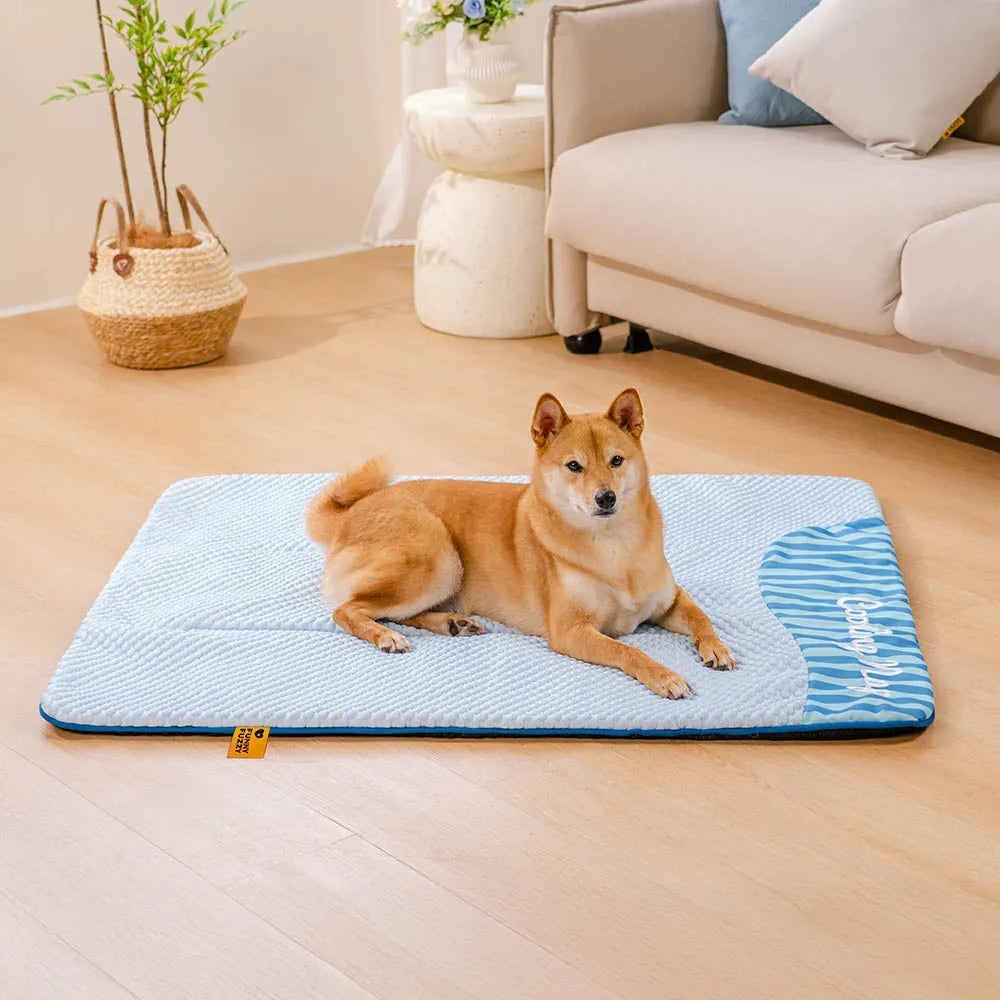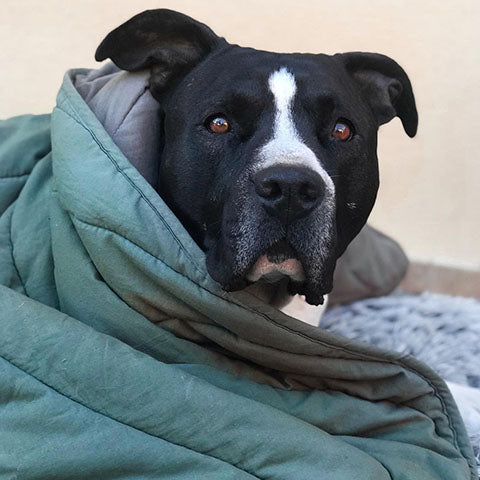Plaque is a sticky film of bacteria, food and saliva on your dog’s teeth. If plaque isn’t cleaned off, plaque hardens to form tartar (also called dental calculus). That plaque and tartar can irritate the gum line, cause gum disease (gingivitis), and lead to periodontal disease. Left untreated, this may cause tooth decay, tooth loss, bad breath, pain and bigger health issues for your pet’s overall health.
Causes of Plaque on Dog's Teeth
Plaque starts as a sticky layer that develops within hours after a meal. It’s a mix of saliva, food and bacteria that coats the surface of your dog’s teeth. If that film isn’t brushed away, minerals in the saliva harden it into plaque and tartar, the brown tough layer close to the gum line that we all dread. PDSA explains that this build-up “collects on teeth and eventually turns into a hard, brown substance called tartar” which then damages gums and lets bacteria travel to the heart or kidneys.
Several factors speed the build-up:
-
Soft, wet diets stick more than crunchy kibble.
-
Small or flat-faced dog breeds have crowded mouths where plaque hides.
-
Age and hormones change mouth pH, helping bacteria thrive.
-
Not enough chew toys or natural gnawing reduces self-cleaning.
Scientists describe plaque as a biofilm that “colonises teeth and causes inflammation” in early studies on canine mouths. Knowing these causes helps you tackle plaque from your dog’s first day at home—long before it hardens into tartar that needs a vet drill.

Why Plaque Is a Big Deal
Plaque and tartar build up irritate the gums, reduce blood flow, and can make the gums recede. In severe cases, bacteria can spread and affect vital organs like the kidneys and liver. That’s why regular dental care is essential for your dog’s oral health, overall dental health, and overall health. Fixing problems early helps prevent pain, toothache, and costly treatments down the line.
Check Your Dog’s Teeth at Home
Before you start removing plaque, find it. Lift the lips, sniff the breath and look for a soft yellow film or buildup of brown tartar on back molars. Reddish gums, drooling or pawing at the mouth all signal trouble. The PDSA advises a weekly home check if you can’t manage daily.
If you see a brown tough layer close to the gum line it’s best to ask your vet-Q team for help. Professional scaling clears hardened tartar that brushing alone is unlikely to shift. Early spotting prevents costly extractions and keeps part of dogs overall smile intact.
Five-Step Brushing Routine
Brushing your dog’s teeth is one of the most effective ways to protect teeth and gums. Aim for dog’s teeth daily or as often as you can.
-
Get the right tools
Choose a dog toothbrush or finger brush that’s the right size for your dog. Pick a dog toothpaste—ideally enzymatic toothpaste (the enzymes help break down plaque; enzymatic toothpaste helps break deposits) with active ingredients that have antibacterial properties. Never use human toothpaste / use human toothpaste—products for humans (often with fluoride or xylitol) can be toxic if dogs swallow them. -
Start brushing when your dog is relaxed
Let them lick a tiny bit first so they like the taste. Use lots of praise and a few treats to make it rewarding. -
Use a gentle circular motion
Hold the brush at a 45° angle to the gum line and make small circles on the surface of the teeth—especially the back molars where plaque builds. -
Go slow and be consistent
Even 30–60 seconds helps. Regular brushing on a daily or near-daily basis gives the best results and helps prevent plaque and reduce plaque buildup. -
Add helpers
Dental wipes, oral gel, and water additives can support dog’s dental hygiene and oral hygiene. These don’t replace brushing but work well alongside it.
Food & Chews That Fight Plaque
Smart choices can reduce plaque and support tartar control:
-
Dental chews, dental treats, and dental sticks: dogs love to chew, and the texture helps remove tartar and wipe away soft plaque.
-
Chew toys (toys designed for teeth): encourage dogs to chew safely to help reduce plaque buildup.
-
Raw bones: can be risky (they may splinter and damage enamel). Ask your vet before offering any bone.
-
Veggies like carrot sticks: a simple home option some people use to help clean the surface of teeth.
-
Natural ingredients (e.g., coconut oil) may help freshen dog’s breath, but they are not a full replacement for brushing.
Always choose items the right size for your pooch and dog’s size, and buy products designed for pets to keep cleaning safe.

Vet Treatments When Brushing Isn’t Enough
Even the best tooth brushing can’t break down rock-hard plaque and tartar. When the gum line is already rimmed with a brown tough layer, your vet will suggest a professional scale-and-polish under general anaesthetic. The Royal College of Veterinary Surgeons warns that “anaesthesia-free dentistry” risks hidden pain and missed disease. A full dental, including X-rays, clears deep pockets and smooths enamel so new dog plaque can’t cling as fast. PDSA data show most dogs need their first dental by age three, and that brushing alone is unlikely once tartar is set. Immediate care beats waiting: ignored tartar can erode bone, trigger tooth loss and eventually could risk bacteria spreading to the heart or kidneys—serious threats to your dog’s overall health and wellbeing.
Money Talk: Costs & Insurance Tips
UK clinics quote £250–£450 for a routine scale-and-polish, plus £70–£120 for each extraction. Big city prices lean higher, but a rural surgery may cost less. Only some insurers pay for dental work, and most demand proof you brush your dog's teeth and attend yearly checks.
MoneyHelper, the government-backed guide, says to read the small print: dental cover “usually applies only to illness or injury, not cosmetic care”. Keep a photo diary of your dog's teeth daily checks; it’s simple evidence if a claim arises. PDSA’s latest PAW Report notes 61 % of owners have no insurance at all—so a five-minute hygiene habit can save hundreds later.
Daily 30-Second Prevention Checklist
Good oral hygiene is an important part of dogs’ overall health; here’s a micro-routine you can tag to kettle-boil time:
-
Swipe & wipe – run a damp gauze along each gum line.
-
Sniff test – fresh breath? If not, check for bad breath or swelling.
-
Water top-up – clean bowl equals less sticky plaque.
-
Chew toys / dental treats – rotate safe chews that scrape soft film.
-
Calendar tick – mark “done” to spot missed days.
Blue Cross reminds owners that quick, daily actions “prevent pain and suffering” far better than cure. These half-minute habits stop pet’s teeth becoming coated in plaque, slash costly dental problems, and keep those four-legged friends’ teeth gleaming.

FAQs
Should I scrape the plaque off my dog's teeth?
No. Scraping plaque and tartar at home can damage your dog’s gums and enamel. Thick tartar buildup needs professional dental cleaning by a vet to avoid pain and serious dental health issues.
How to get thick plaque off dog's teeth?
Thick plaque and tartar must be removed by a veterinarian. At home, brush your dog’s teeth daily, use enzymatic toothpaste, and offer dental chews, chew toys, and oral gel to help prevent buildup.
Conclusion
Healthy mouths equal happy dogs. Follow the brush-chew-check triangle to keep us, our dogs’ teeth and their hearts safe. Book a vet dental if tartar is already set, use the 30-second checklist to stay on track, and swap treats for tooth-friendly chews.




